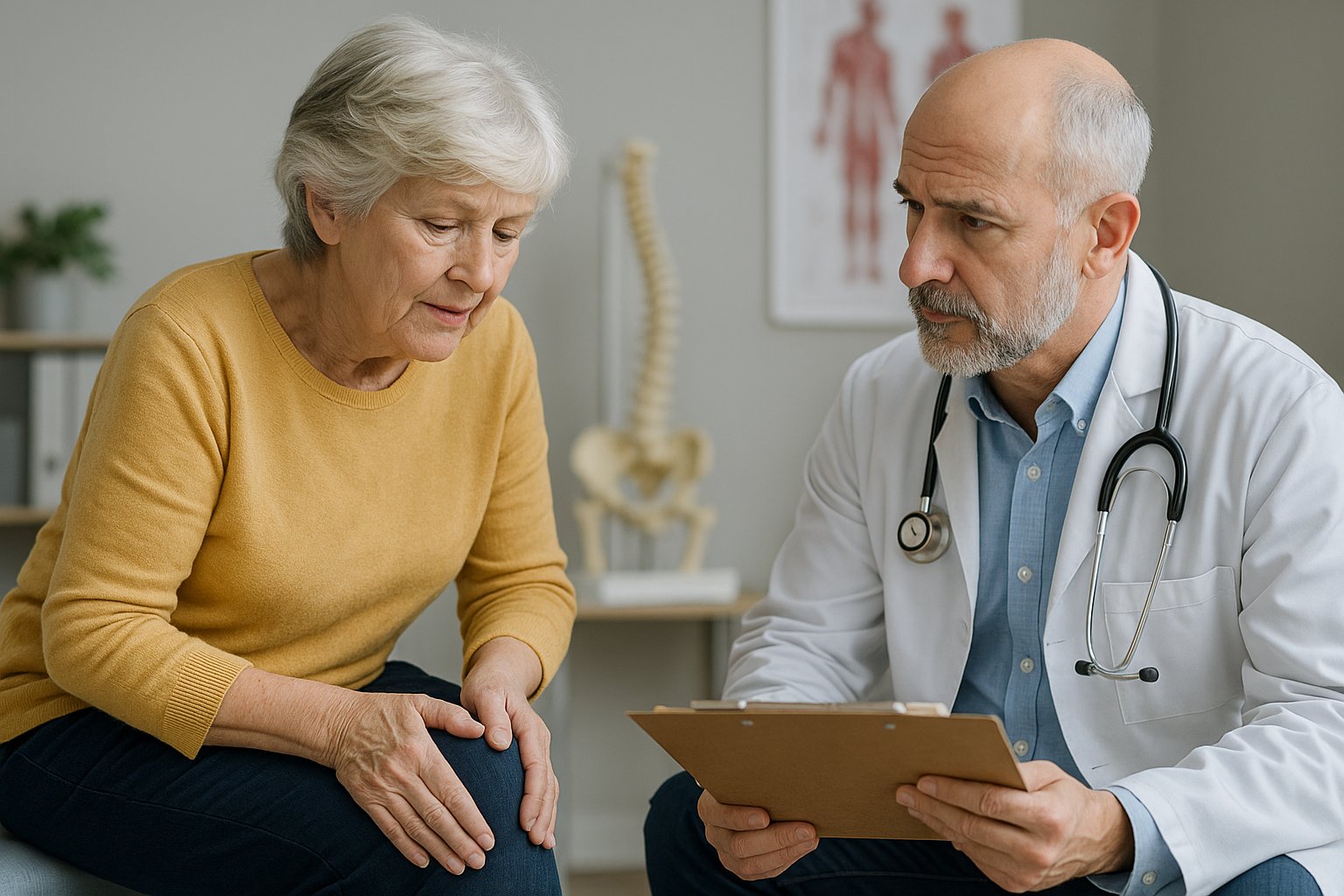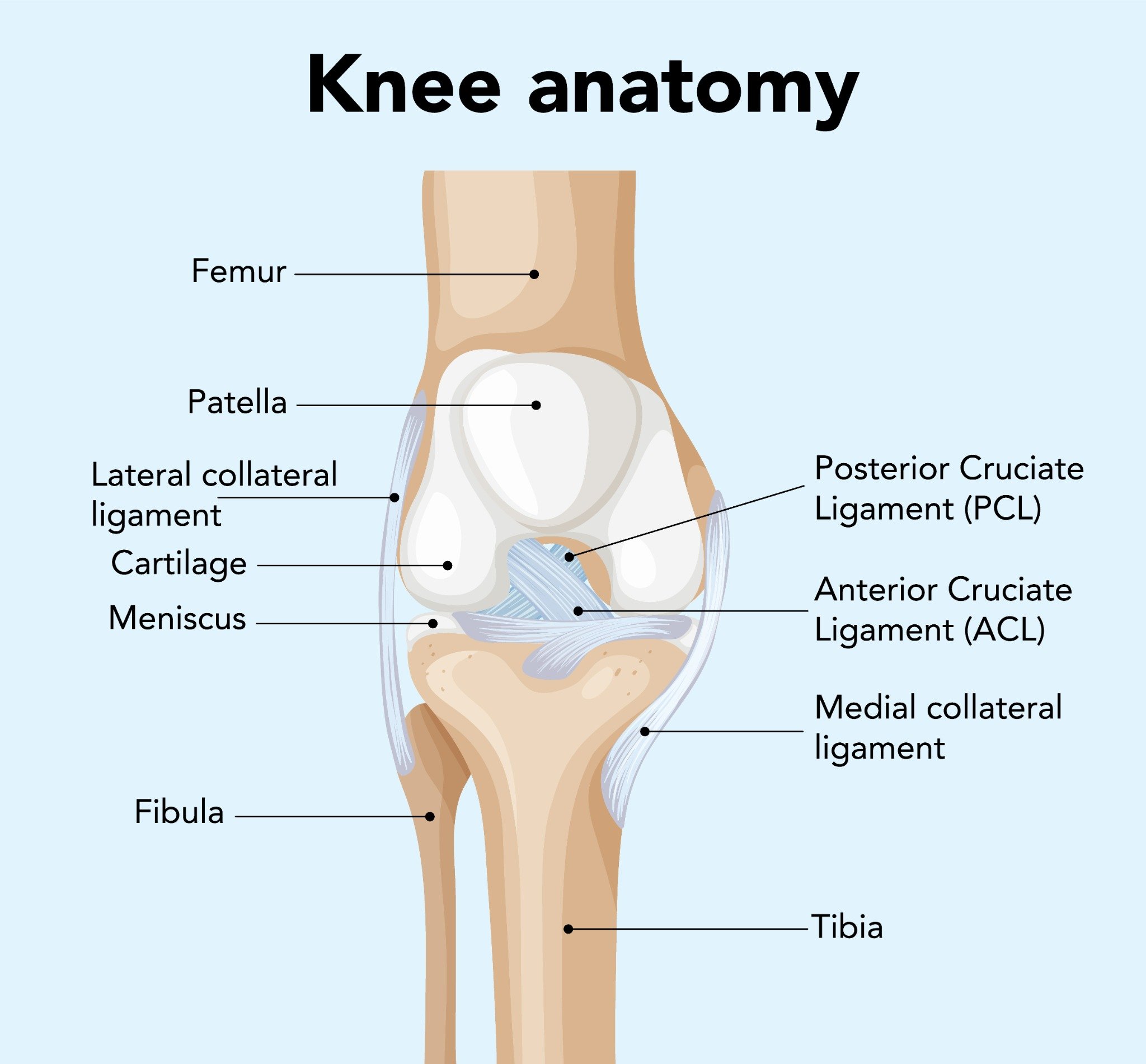What Causes a Bony Lump on Knee Cap

A bony lump on your kneecap can be alarming, especially if it appears suddenly or starts to grow, but most bumps on or around the patella are harmless. They often come from non-cancerous causes and can usually be managed with simple treatments or monitored over time.
Some common reasons include benign bone growths such as osteochondromas, small fluid-filled sacs called bursae that may become inflamed (bursitis), or bone spurs that form due to wear-and-tear from knee osteoarthritis.
Overuse, frequent kneeling, or minor injuries like bruising or tendon irritation can also cause swelling or hard lumps. In rare cases, a lump could point to infection, a cyst, or something more serious like a tumor, so it’s important to get it checked, especially if it’s painful, growing, or interfering with movement.
Common causes of a bony lump on the kneecap:
- Osteochondroma: A non-cancerous bone growth often found near joints
- Bursitis: Swelling of a small fluid-filled sac that cushions the knee
- Bone spur (osteophyte): Extra bone growth due to arthritis or joint stress
- Minor injury or overuse: Repetitive movement or direct trauma to the knee
- Prepatellar bursitis: Inflammation in the front of the kneecap, often from kneeling
Always consult a medical professional if you notice a new lump, early evaluation helps rule out serious issues and gives peace of mind.
Understanding the Knee Cap and Surrounding Structures

Your kneecap, or patella, is a small bone that sits in front of the knee joint. It glides along a groove in your thigh bone and acts like a shield to protect the joint. Tendons and ligaments attach the patella to your thigh muscles and the top of your shinbone.
A small cushion called a bursa sits just under the skin in front of the patella. When everything is working smoothly, you barely notice these structures. When something becomes inflamed or grows abnormally, you may feel a bump.
Why You Might Feel a Bony Bump
Osteochondromas – benign bone growths
An osteochondroma is the most common benign bone tumor. These growths usually form near growth plates in children and teens and feel like firm, painless lumps. They often appear on the ends of long bones like the femur or tibia.
Most cause no symptoms and are found by accident during an exam or imaging. Because they grow away from the joint, they seldom interfere with movement. Treatment is usually unnecessary unless the growth causes pain or limits motion.
Prepatellar bursitis and other swellings
In front of your kneecap lies the prepatellar bursa, a tiny sac filled with lubricating fluid. Frequent kneeling, a fall, or arthritis can inflame this sac, causing prepatellar bursitis. The knee may look swollen, feel warm to the touch, and ache when you bend it.
People who garden, clean floors, or lay carpets are prone to this condition. Infection can also cause the bursa to fill with fluid, making the area red and tender. Rest, ice, and padding usually calm the swelling; doctors may drain or treat it with antibiotics if infection is present.
Bone spurs from knee osteoarthritis
As we age, the cartilage that cushions our joints wears down. When the body tries to repair the damage, new bone may grow at the edges of the joint. These bone spurs, or osteophytes, can make the knee feel knobby or lumpy.
They are common in the early stages of knee osteoarthritis and often develop on the underside of the kneecap or along the tibial plateau. Bone spurs sometimes cause stiffness and a grating sensation when you move. They also remind us that the knee joint is working harder than it should.
Osgood‑Schlatter disease and tibial tuberosity
During adolescence, the area just below the kneecap where the patellar tendon attaches to the shinbone can become irritated by growth and repetitive stress. Osgood‑Schlatter disease causes pain and a bony bump over the tibial tuberosity. Running and jumping often aggravate it. While this condition usually resolves once growth slows, some adults are left with a permanent bump and occasional tenderness.
Injuries, fractures or infections
A bump might also result from a minor fracture, bleeding under the skin, or a pocket of pus. Falls, direct blows, or sudden twisting can injure the bone or ligaments. Fractures often cause sharp pain and swelling.
Infections make the area red, warm, and tender; fever may accompany these symptoms. Any lump that appears after a trauma or is accompanied by redness, fever, or draining fluid warrants prompt medical evaluation.
How Knee Osteoarthritis Leads to Bony Outgrowths
Cartilage acts like a cushion between the bones of your knee. When it wears down from osteoarthritis, the bones begin to rub together. Your body’s response is to grow more bone around the edges of the joint. These osteophytes can look and feel like a bony lump.
They commonly form along the patella and tibial plateau during the early stages of arthritis. Symptoms of knee osteoarthritis include pain with movement, stiffness after rest, swelling, and sometimes radiating discomfort down the leg. If you’ve been told you have “bone on bone” arthritis, these spurs are part of that picture.
Diagnosis – What to Expect
When you notice a new lump, a healthcare provider will start with a detailed history and physical exam. They will ask whether the lump hurts, whether it appeared suddenly or gradually, and if you’ve had any recent injuries. They’ll check for redness, warmth, swelling, tenderness, and changes in range of motion. Imaging tests may include:
- X‑rays, which can show bone spurs, fractures or osteochondromas.
- Ultrasound to look at soft tissues like bursae or tendons.
- MRI scans when more detail is needed, such as suspected tumors or cartilage damage.
- Blood tests or fluid analysis if infection or gout is suspected.
These tools help differentiate benign lumps from more serious problems.
Treatment Options
Monitoring benign bone growths
Most osteochondromas and small bone spurs need no treatment. Doctors often recommend a “watch and wait” approach, checking the growth periodically for changes. Painful or growing osteochondromas may be removed surgically, but that is uncommon.
Managing bursitis and inflammation
Prepatellar bursitis usually improves with RICE: rest, ice, compression, and elevation. Avoid kneeling or repetitive bending until the swelling subsides. Over‑the‑counter anti‑inflammatory medicines reduce pain.
Wearing kneepads or using a knee brace for pain can prevent future flares. If the bursa is infected, your doctor may need to drain it and prescribe antibiotics. Exercises to strengthen and stretch the muscles around the knee help support the joint; you can find gentle ideas in our exercises for knee pain guide.
Treating bone spurs and knee arthritis
When a bony lump is part of knee osteoarthritis, addressing the arthritis helps ease the bump. Lifestyle changes such as losing excess weight and engaging in low‑impact activities like swimming or cycling take stress off the joint.
Strengthening muscles around the knee improves stability. Medications range from non‑steroidal anti‑inflammatory drugs (NSAIDs) to corticosteroid injections. For longer‑lasting relief, your doctor may suggest viscosupplementation (injecting a gel‑like substance to lubricate and cushion the joint) or platelet‑rich plasma therapy.
These minimally invasive therapies, offered at Arthritis Knee Pain Centers, can reduce pain and slow cartilage breakdown. Supportive aids like an arthritis knee brace may provide comfort during daily activities. In severe cases where cartilage is severely worn, knee replacement is considered.
Self‑Care and Prevention
Taking care of your knees reduces the chances of developing lumps and spurs. Here are simple tips:
- Maintain a healthy weight to minimize pressure on your knees.
- Keep moving. Gentle exercise like walking, cycling or swimming nourishes cartilage and strengthens muscles.
- Warm up before activity and stretch your quadriceps and hamstrings afterward to keep tissues flexible.
- Avoid prolonged kneeling or deep squatting. Use kneepads when gardening or cleaning floors.
- Reducing knee inflammation with simple daily solutions can ease swelling and help protect your joints over time.
These steps also help slow the progression of knee osteoarthritis, preventing larger bone spurs from forming.
When to Consult a Specialist
Most lumps on the knee cap are harmless. However, see a healthcare provider if:
- The lump grows quickly or becomes painful.
- You notice redness, warmth, fever or drainage that might indicate infection.
- The bump follows a fall or injury.
- Pain interferes with your daily activities or sleep.
Ignoring troublesome symptoms can lead to chronic pain or limited mobility. A prompt evaluation can provide peace of mind and early treatment if needed. For personalized advice and minimally invasive options, schedule a no-charge, no-obligation screening with Arthritis Knee Pain Centers. Our team can evaluate your knee and recommend therapies tailored to your needs.
